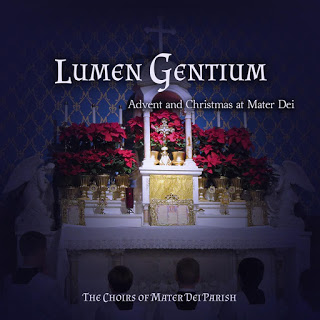This is installment #4 in the introductory Gregorian Chant series. If you’ve missed any of the earlier tutorials, it would be good to review them now before continuing with this tutorial on the ictus, arsis, and thesis:
Now we get into some of the finer points, details that transform a mere series of neums into a musical expression, details that give life to the chant.
Arsis and Thesis
If you consider any piece of music, you will notice there are dynamic contrasts, areas of the piece that are louder or softer than others. Gregorian chant is no exception. In fact, chant in particular thrives on dynamic contrast and could be considered a continuous stream of swelling and diminishing musical thoughts. Put another way, in chant, the dynamic is in a continuous state of flux, either growing or fading in intensity.
This growth in the chant is known as arsis. The fading or diminishing is known as thesis. But how does one decide when to grow in intensity and when to fade? When does one start and end? By applying the ictus we define rhythmic sections. We generally grow and fade with the rising and falling of the neums in pitch within those rhythmic sections. The neums themselves further define the intensity of the notes, as certain notes in the neum should be sung lighter than others.
The Ictus
Every line of chant is broken rhythmically into groups of two or three beats. Unlike modern music where there is a meter or time signature imposed across broad sections of the music, chant is a series of 2 or 3 note patterns counted such as: 1-2, 1-2-3, 1-2-3, 1-2, 1-2, 1-2-3. A pattern of 2 may be followed immediately by a pattern of 3 then another pattern of 3 or another pattern of 2. Sometimes there is a prolonged stretch of one pattern or the other, but in general, either pattern may follow the other at any time. The start of a group is determined by the placement of the ictus.
Rules for Placement of the Ictus
The ictus, sometimes referred to as the vertical episema when written, is the little vertical mark above or beneath a note. See the small mark beneath the second note in the following picture:

The ictus marks the 1 in a 1-2 or 1-2-3 group. By analogy, you might consider this 1 the downbeat. When not explicitly drawn, the ictus is implied. Follow the rules for placing the ictus:
- When explicitly drawn in, the downbeat occurs where the ictus is drawn. This placement can affect whether the previous set is a group of 2 or 3.
- Sustained notes generally receive the ictus.
- In general, the ictus (downbeat) occurs at the start of a neum (or group).
Other things to remember:
- The ictus always falls on 1.
- Counting never goes above 3.
- The phrase does not end on the downbeat but rather ends with beat 2 or 3. Beat 2 or 3 can be carried across a bar such that the start of a phrase after the bar does not begin with 1 (although this is less common, it does occur).
- The quilisma and the horizontal episema, while causing elongations, do not increase the duration with respect to counting from the ictus.
- The ictus may disagree with the placement of the accented syllable in the text.
Interpretation
All this said, there is some room for some interpretation. Even the Liber Usualis gives examples where it is acceptable to place the ictus several different ways, all of which follow the rules. (See page xxix, in that text.)
I have heard objections to likening the ictus to the downbeat because it can cause people to sing the ictus with an exaggerated emphasis. I agree that emphasis can be taken too far, but I do think the analogy can help people grasp the concept of the ictus. Personally, I feel some emphasis on the ictus is often musically pleasing.
Examples
While the theory behind the ictus is important, I find it easier to understand what’s going on by example. Below, I try to contrast the use of the ictus in a piece with the same piece sung ignoring the ictus. In the following clip I sing the first line of the Kyrie of Mass XI while ignoring the ictus:
Contrast that with the ictus added in (but purposefully very little arsis and thesis):
Now, consider the same line with arsis and thesis applied with the ictus:
Finally, to highlight the counting and placement of the ictus, the same line counted, as opposed to sung with the lyrics:

Arsis vs. Thesis
Having identified where the groupings are, how does one know whether to interpret a group with an arsis or a thesis? Here are a few guidelines.
- Begin with an arsis. You cannot go from silence to sound by diminishing.
- End with a thesis. You cannot go from sound to silence by increasing the volume.
- In the middle, if the progression of notes rises in pitch, an arsis is usually appropriate. If the progression of notes falls in pitch, a thesis is usually appropriate.
- Don’t ignore the neums. If, for example, the second note of a torculus does not have the ictus, don’t make it louder than the first or third note, even if you are in an arsic passage.
- It is okay to have slight rises in dynamic at the ictus, even as you are generally diminishing.
- When you come to the end of a phrase, you should diminish.
One should also look at larger groups of neums rather than just individual rhythmic groups. These neum “clusters”, for lack of a better word, are tied to the lyrics and syllabic placement. They operate closer to the word level (but there isn’t a one-to-one correlation). One might say that theses clusters of musical thought begin with an arsis and end with a thesis. These clusters, however, are not necessarily separated by pauses. They don’t necessarily mark the end of a phrase.
In our example, I think Kyrie is one cluster ending on a thesis and eleison is another. However, the sound should continue to flow from one word to the other. The entire phrase is connected, as the quarter bar between the two words highlights (don’t take a breath there). Still, there is certainly a thesis at the end of “Kyrie” before the arsis that begins “eleison”.
Conclusion
The primary concept to take away from this tutorial on arsis and thesis is that Gregorian Chant should be sung with feeling. There can be a tendency to chant in a monotonous way where no note is more important than another, as in the first clip above. If one ignores arsis and thesis, the beauty of the chant will never be given the opportunity to come out. Rather the chant’s radiance will remain imprisoned, as it were, behind the bars of the four line staff.
The Liber Usualis
Now that you’ve gotten through the chant tutorial, you might be interested in getting a copy of the Liber Usualis, a 2300 page tome containing the most used chants throughout the year. If you have an iOS device, a cost-effective option is my Liber Pro app, which includes calendar-based navigation.






Learned Gregorian chant as a child, but your explanation of how to chant properly was very helpful.
Thank you! I’m glad you found it helpful.
In our parish it appears that the “Liber usualis” of my long-ago youth may be about to heave over the horizon. Thank you for this tutorial to recommend to fellow parishioners who grew up after Vatican II. (Few people nowadays know *not* to “punch the podatus”!)